 The Ex Talk by Rachel Lynn Solomon
The Ex Talk by Rachel Lynn Solomon Format: eARC
Source: supplied by publisher via NetGalley
Formats available: paperback, ebook, audiobook
Genres: contemporary romance
Pages: 338
Published by Berkley on January 26, 2021
Purchasing Info: Author's Website, Publisher's Website, Amazon, Barnes & Noble, Kobo, Bookshop.org
Goodreads
Shay Goldstein has been a producer at her Seattle public radio station for nearly a decade, and she can't imagine working anywhere else. But lately it's been a constant clash between her and her newest colleague, Dominic Yun, who's fresh off a journalism master's program and convinced he knows everything about public radio.
When the struggling station needs a new concept, Shay proposes a show that her boss green-lights with excitement. On The Ex Talk, two exes will deliver relationship advice live, on air. Their boss decides Shay and Dominic are the perfect co-hosts, given how much they already despise each other. Neither loves the idea of lying to listeners, but it's this or unemployment. Their audience gets invested fast, and it's not long before The Ex Talk becomes a must-listen in Seattle and climbs podcast charts.
As the show gets bigger, so does their deception, especially when Shay and Dominic start to fall for each other. In an industry that values truth, getting caught could mean the end of more than just their careers.
My Review:
I went into this book predisposed to love it, because the description reminded me so much of a book with a very similar premise that I utterly adored, Turn It Up by Inez Kelley. (It’s been ten years since I read Turn It Up and I still remember it fondly. It was delightful and it’s still available in ebook.)
And I did enjoy reading The Ex Talk. I had a great time with the reading of it and the characters. But I also didn’t like it, because part of the underlying premise doesn’t hold up to even a cursory examination.
This dichotomy results in the following very mixed feelings review.
The best parts of the story revolve around the “insider baseball” aspects of Public Radio, as seen through the eyes of Shay Goldstein. Shay has her dream job of being a producer on her hometown Seattle station, and has been there for a decade when the story begins.
Shay loves her job, she loves the station, she loves working in public radio. It’s been her dream since childhood, when she and her dad bonded over listening to and acting out programs like Car Talk as they did all sorts of wonderful things together. Those memories are the golden parts of Shay’s childhood.
When her dad died suddenly, those memories got trapped in amber, until working in public radio became her dream. And once she achieved that dream, it became her life. Or swallowed her life. Shay’s not very good at downtime, so she’s perfectly suited to being in a job that won’t let her have any.
But, as we know in real life, public radio lives on pledge drives and ratings and grants and sponsors that aren’t exactly called sponsors. And that radio isn’t the media powerhouse it used to be and public radio in particular often has a tough time with ratings and dollars.
That’s where the plot of this story really kicks in – and also where it kicks out a bit.
In the race for ratings, Shay’s slimy boss concocts a scheme that Shay isn’t on board with at all. Or wouldn’t be if her job, any job at the station, wasn’t directly on the line.
Because the scheme is wrapped around a big fat lie – a lie that gets harder and harder to tell with each passing day and each download and each encouraging tweet. The lie is a huge hit for the station – and a huge mess for Shay and her partner-in-not-exactly-a-crime, Dominic Yun.
And thereby hangs a tale, as the saying goes. Also, thereby ends up hanging Shay and Dominic.
Escape Rating B-: The lie that Shay and Dominic end up telling is a doozy. That they are exes who parted in a friendly enough fashion that they are able to co-host a radio talk show about relationships that banks on their supposed status as exes.
As a romance, this is an enemies to lovers story. When we first meet Shay and Dominic, they are rivals. Dominic is the new “golden child” because their station manager is a misogynistic douchecanoe.
Shay, naturally, resents that Dominic has walked into a privilege and status that she’s worked ten hard years for and not managed to achieve. Not because she’s any less good at the job, but because he has one bit of anatomical equipment that she lacks.
Their relationship is prickly (pun slightly intended) because Shay resents Dominic for his easy access to privilege and he envies her for her in-depth knowledge of public radio in general, the station in specific, and just how to get things done and where the bodies are buried.
But they have chemistry that comes through even over the radio, which is what hatches the scheme to lie to the entire city of Seattle and anyone listening to the podcast of the program.
And that’s the part that makes the story fall down. Not that their romance in spite of themselves isn’t a whole lot of fun, but the way that they got there. Specifically the way that Dominic gets there.
Dominic is all about becoming an investigative reporter and ethics in journalism. Seriously. All about it – at least until he lets himself be talked into this program with Shay. The fundamental lie at the heart of their success is something he doesn’t even seem to interrogate himself about much, as he’s spending much more energy dealing with his feelings for Shay – feelings that he’s not supposed to have because in public their relationship is supposed to have already been there and done that.
There’s so much going for this book. Really. So much. But its central premise based on that big lie took it from “willing suspension of disbelief” to “unwilling to suspend disbelief” for this reader just as much as it did for their audience. It’s not so much that I can’t imagine it happening as that I’m not on board with it happening with this particular character. If Dominic weren’t such a stand-up, straight-arrow kind of guy, we wouldn’t understand what Shay sees in him. But the person he’s represented as at the beginning wouldn’t be part of this mess without a whole lot more guilt and angst than we get to see.
That the douchecanoe station manager doesn’t get nearly as much of a comeuppance as he deserved is kind of the scraped off icing on this not quite properly baked cake. But it’s still a fun read. As I said at the top, mixed feelings. Very.
Your reading mileage may definitely vary.

 Mr. Donahue's Total Surrender (Enterprising Scoundrels #1) by
Mr. Donahue's Total Surrender (Enterprising Scoundrels #1) by 
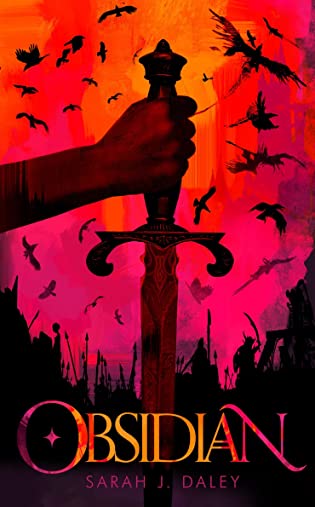 Obsidian by
Obsidian by 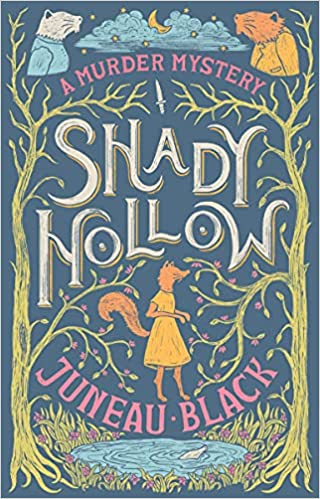 Shady Hollow (Shady Hollow #1) by
Shady Hollow (Shady Hollow #1) by 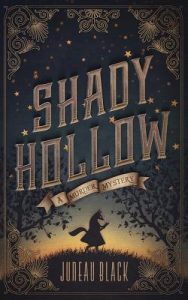 The original U.K. cover (at left) does a bit better job of conveying the darkness that is lurking inside the sleepy little town of Shady Hollow. Because this is the opening book in a series of murder mysteries – admittedly pretty cozy murder mysteries – where all of the characters are VERY anthropomorphized animals.
The original U.K. cover (at left) does a bit better job of conveying the darkness that is lurking inside the sleepy little town of Shady Hollow. Because this is the opening book in a series of murder mysteries – admittedly pretty cozy murder mysteries – where all of the characters are VERY anthropomorphized animals.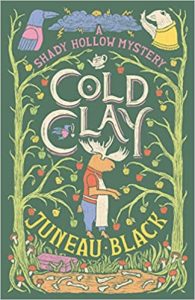 Viewed as creatures, they are adorable and the little touches that remind the reader these are animals draws the reader into the shtick with a smile. But the way the town thinks about itself, the motives for the crime spree, the investigation and most definitely the way that the nosy reporter nearly becomes part of the spree make this a fun, if slightly furry, cozy with just a bit of a twist.
Viewed as creatures, they are adorable and the little touches that remind the reader these are animals draws the reader into the shtick with a smile. But the way the town thinks about itself, the motives for the crime spree, the investigation and most definitely the way that the nosy reporter nearly becomes part of the spree make this a fun, if slightly furry, cozy with just a bit of a twist.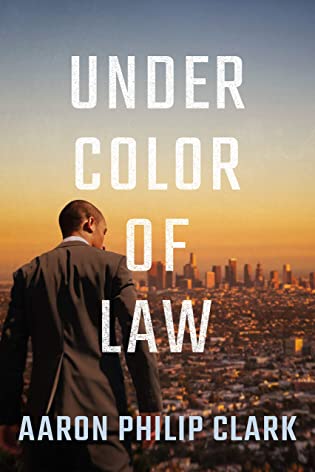 Under Color of Law by
Under Color of Law by 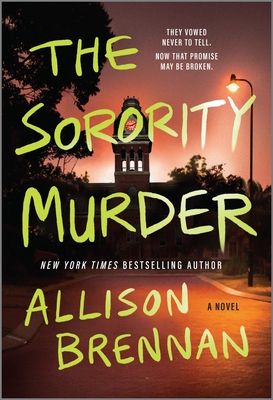 The Sorority Murder by
The Sorority Murder by 
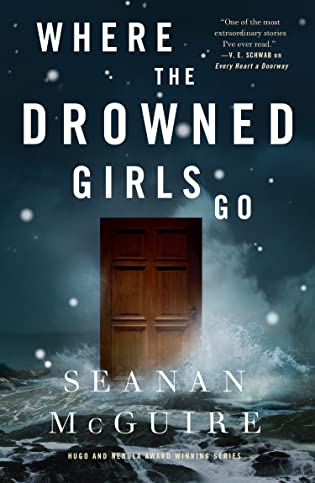 Where the Drowned Girls Go (Wayward Children, #7) by
Where the Drowned Girls Go (Wayward Children, #7) by  We were introduced to Eleanor West’s Home for Wayward Children in the first book in this series,
We were introduced to Eleanor West’s Home for Wayward Children in the first book in this series,  Cora Miller, whom we met in
Cora Miller, whom we met in 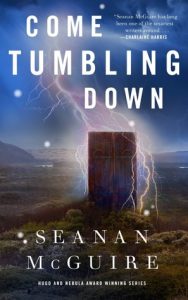 She’s already internalized the messages for girls to be “girly”, flirty and tiny and weak and thin, and has a lot of self-hatred because she’s none of the above. The Whitethorn Institute encourages the children in its dubious “care” to show the worst of themselves, so Cora is bullied and teased for being different – in addition to everything else that’s wrong at Whitethorn.
She’s already internalized the messages for girls to be “girly”, flirty and tiny and weak and thin, and has a lot of self-hatred because she’s none of the above. The Whitethorn Institute encourages the children in its dubious “care” to show the worst of themselves, so Cora is bullied and teased for being different – in addition to everything else that’s wrong at Whitethorn. While this particular entry in the series turned out to be an unexpected readalike for
While this particular entry in the series turned out to be an unexpected readalike for 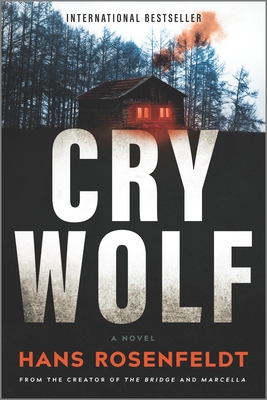 Cry Wolf: A Novel by
Cry Wolf: A Novel by 
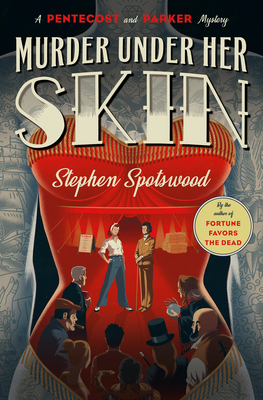 Murder Under Her Skin (Pentecost and Parker, #2) by
Murder Under Her Skin (Pentecost and Parker, #2) by 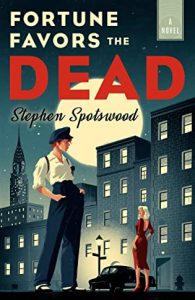 Escape Rating A+: The
Escape Rating A+: The  The Women of Pearl Island by
The Women of Pearl Island by 